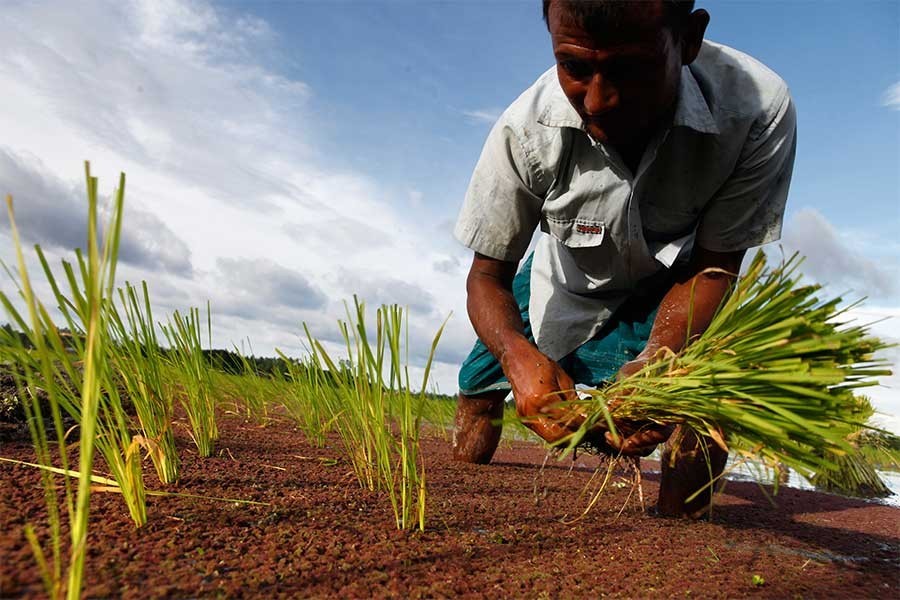The view that the country's agriculture sector is not receiving adequate attention of the policymakers can hardly be contested. The proof lies in the allocations that the government makes for various sectors in the national budgets annually. An FE report, quoting an influential member of the Planning Commission (PC), said on Saturday that the funds made available to the agriculture sector in the budgets during last nine years increased by only 7.6 per cent. Compared to that, the allocation for the transport sector went up by 18 per cent and the same for education and power sectors by 13 per cent each.
What is more troubling is that most part of the allocation, nearly 80 per cent, made available to the agriculture sector is spent on meeting recurring expenditures. The remaining amount is too insufficient to enhance the capacity of the sector to deliver more. Resources in greater volume are necessary to help boost research activities and field-level extension work. However, with paltry amount of funds earmarked for research activities, agricultural scientists have achieved remarkable successes, particularly in the development of a number of crop varieties that are resistant to diseases and adverse soil and weather conditions.
Meanwhile, the share of agriculture in the country's gross domestic product (GDP) has been declining unabatedly. Other sectors of the economy like services and manufacturing have assumed a greater role. With arable land shrinking at a rate of 1.0 per cent annually to make available space for accommodation and other physical infrastructures, agriculture naturally lost its traditional edge over other major areas of the economy. But, the truth remains it is still the mainstay of the economy, in terms of employment and food production.
One does not have to go to the distant past to comprehend the importance of the sector. The loss of only 1.0 million tonnes of rice due to two recurrent floods last year can be cited as an example. The spike in rice price following the shortfall in rice production made the policymakers quite nervous. Despite the import of a substantial volume of rice in recent months, the rice prices are yet to come down to the desired level.
In fair weather conditions, the country is now able to meet the food needs of a population that has more than doubled since independence. It has the potential to produce more cereals, rice and wheat, as well as other crops including cash ones. What the agriculture sector in particular and the growers in general need are necessary support and incentives. The economists have found that the current growth rate of the agriculture sector is not consistent with that of the economy as a whole. They feel that the sector's growth rate must be raised to, at least, 4.5 per cent annually.
Country's farming community has proved time and again its resilience. Against all odds, growers have increased food production threefold. They have the potential to produce more food and other crops provided the ground is made favourable. What is necessary at the first instance is the allocation of more funds for the sector and their prudent use, particularly in research works. An imperfect marketing system has proved to be a great disincentive for the farming community. The policymakers have to find ways to correct the same so that farmers get their due.


